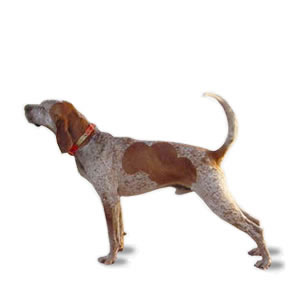Bella, a Labrador cross, was bought by David Richardson from the RSPCA, 26 years ago when she was three years old.
She had lived with Mr Richardson, 76, and his partner Daisy, 81, since 1982 in Clay Cross, Derbyshire.
But she was put down on Saturday following a heart attack while on holiday with the couple.
Until Bella the record for the oldest dog was held by Butch, a 28-year-old from America who died in 2003, according to the Guinness World Records. Officially, the oldest ever dog was Bluey, a sheepdog from Australia, who lived to 29.
Although Mr Richardson, from Clay Cross, has no official documentation to prove Bella's age, he insists she was 29.
"We had just come up to Mablethorpe – we always go to the same place on holiday because we can take the dogs," said Mr Richardson.
"We had barely been here for an hour when Bella started panting and yelping and collapsed in front of the sofa.
"We took Bella to the vet but she was so ill she had to be put to sleep. It was very upsetting. We will miss her a lot.
"Lots of people came to see us and to wish Bella goodbye. Our friends and neighbours were very fond of her,
The RSPCA does not hold records stretching back to when Mr Richardson bought Bella and the Guinness World Records says Bella could not have been included because their was no documentation.
Source : Telegraph
She had lived with Mr Richardson, 76, and his partner Daisy, 81, since 1982 in Clay Cross, Derbyshire.
But she was put down on Saturday following a heart attack while on holiday with the couple.
Until Bella the record for the oldest dog was held by Butch, a 28-year-old from America who died in 2003, according to the Guinness World Records. Officially, the oldest ever dog was Bluey, a sheepdog from Australia, who lived to 29.
Although Mr Richardson, from Clay Cross, has no official documentation to prove Bella's age, he insists she was 29.
"We had just come up to Mablethorpe – we always go to the same place on holiday because we can take the dogs," said Mr Richardson.
"We had barely been here for an hour when Bella started panting and yelping and collapsed in front of the sofa.
"We took Bella to the vet but she was so ill she had to be put to sleep. It was very upsetting. We will miss her a lot.
"Lots of people came to see us and to wish Bella goodbye. Our friends and neighbours were very fond of her,
The RSPCA does not hold records stretching back to when Mr Richardson bought Bella and the Guinness World Records says Bella could not have been included because their was no documentation.
Source : Telegraph




















